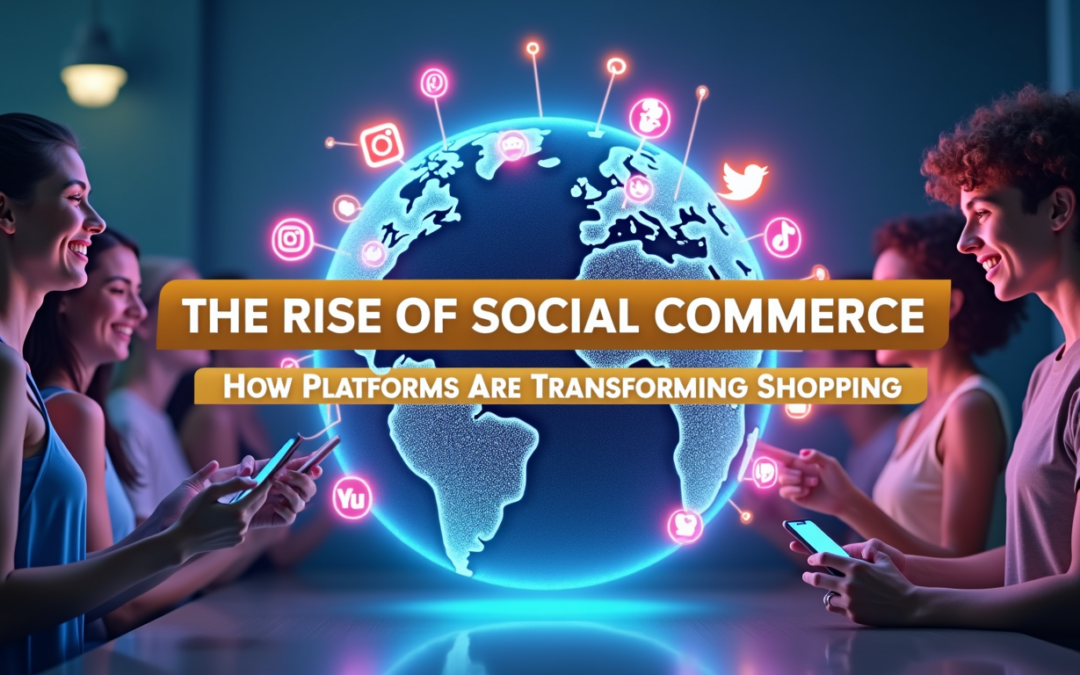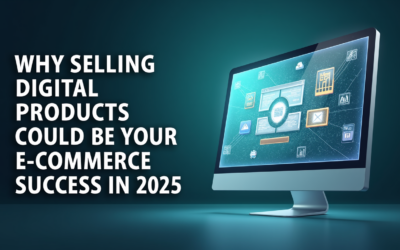The Rise of Social Commerce: How Social Media Platforms Are Changing Online Shopping
In recent years, social commerce has become one of the biggest trends in online shopping. With billions of people using social media platforms like Instagram, Facebook, and TikTok every day, these platforms are no longer just places to socialize — they’re now key players in the world of e-commerce. From buy buttons on posts to live shopping events, social commerce is transforming how we shop online.
Let’s dive into how social media platforms are changing online shopping and what it means for businesses and online shoppers everywhere.
1. What is Social Commerce?
Before we dive deeper, let’s define what social commerce is. Social commerce is the integration of online shopping with social media platforms. It allows users to discover, explore, and purchase products directly through social networks, without leaving the platform.
For example, you might see a buy button in an Instagram story or a TikTok video that lets you purchase a product right from the post. It’s seamless, quick, and incredibly convenient. This trend is blending e-commerce and social media to create a new shopping experience — one that’s social, interactive, and highly engaging.

2. How Social Media Platforms Are Changing Online Shopping
Social media platforms are fundamentally changing how businesses connect with customers and how online shoppers make purchasing decisions. Here are a few ways they’re doing it:
- Shoppable Posts and Stories: Many social media platforms now offer shoppable posts, allowing brands to tag products in their posts, stories, or videos. Instagram, Facebook, and Pinterest all offer this feature, making it easy for users to click on a product and make a purchase directly from the social media platform.
- Live Shopping Events: Platforms like Instagram and Facebook have introduced live-stream shopping events, where influencers or brands showcase their products in real time. Viewers can purchase items as they watch, creating a more interactive and engaging shopping experience.
- Influencer Marketing: Social media influencers have always played a role in marketing, but social commerce has taken this to the next level. Influencers can now share product links directly in their posts or stories, making it easier for their followers to purchase items they recommend.
- Product Discovery: Social media platforms have become powerful tools for product discovery. Instead of searching for products on a website or app, users can stumble upon products while scrolling through their feeds. Social media is helping businesses reach new audiences and expand their customer base.
3. Why Social Commerce is Popular with Online Shoppers
There are several reasons why social commerce has become so popular with online shoppers:
- Convenience: The biggest advantage of social commerce is how easy it is to shop. With just a tap or a click, you can make a purchase without leaving your favorite social media platform. This convenience makes shopping feel effortless and fast.
- Personalized Shopping Experience: Social media platforms use customer data to understand users’ interests, behaviors, and preferences. As a result, they can show products that are highly relevant to you, making your shopping experience more personalized.
- Social Proof: Before making a purchase, many online shoppers look for reviews or recommendations from other people. Social media gives users access to reviews, user-generated content, and influencer recommendations that act as social proof, helping them feel more confident in their purchasing decisions.
- Interactive Shopping: Social commerce allows shoppers to engage with brands and products in ways that traditional online stores can’t. Through live shopping events, comments, and direct messages, customers can ask questions, get more details, and interact with the brand or influencer in real time.

4. How Businesses Are Using Social Commerce to Grow
Social commerce is not just about online shoppers — it’s a huge opportunity for businesses to grow. Here’s how they’re using social media platforms to boost sales and reach new customers:
- Building Direct Relationships with Customers: Social media allows businesses to directly engage with their customers. They can reply to comments, send direct messages, and even engage with customer content. This creates a sense of community and builds customer relationships.
- Targeted Advertising: Social media platforms offer powerful targeting tools, allowing businesses to reach their target audience based on factors like age, location, interests, and behaviors. This makes it easier for businesses to find people who are more likely to be interested in their products.
- Shoppable Ads: In addition to organic posts, businesses can use shoppable ads to promote their products. These ads feature clickable images or videos that allow customers to purchase items directly from the ad. This is another way businesses can make shopping more convenient for their customers.
- Influencer Collaborations: Many brands collaborate with social media influencers to promote their products. Influencers have built a trusted following, and when they recommend a product, their followers are more likely to buy it. Through social commerce, influencers can easily direct their audience to a purchase page.
5. The Future of Social Commerce
Social commerce is still evolving, but it’s clear that it’s here to stay. Here’s a look at what the future of social commerce might hold:
- Seamless Integration with E-Commerce Platforms: In the future, social media platforms will continue to integrate with e-commerce platforms. This will make it even easier for businesses to manage their online stores and for customers to make purchases directly through social media.
- Augmented Reality (AR): Some platforms, like Instagram and Snapchat, are already experimenting with AR to allow users to try on products virtually. In the future, more social media platforms will likely use AR technology to offer more immersive shopping experiences. Imagine trying on clothes or makeup virtually before making a purchase.
- Faster and More Secure Payments: As social commerce grows, payment solutions will become even more seamless and secure. Platforms will continue to integrate digital payment methods like UPI payments in India, digital wallets, and QR code payments to make transactions quick, secure, and convenient.
- Social Shopping Communities: The future may bring even more community-driven features, where people can shop together, share experiences, and make recommendations in real-time. This will likely enhance the sense of connection between online shoppers and brands, making shopping feel more like a shared experience.

Conclusion: Social Commerce is Here to Stay
Social commerce is not just a passing trend — it’s transforming the way we shop online. By integrating shopping into social media platforms, businesses are making it easier for online shoppers to discover and purchase products in a more personalized and engaging way.
For businesses, social commerce offers a powerful tool for reaching new customers, building relationships, and driving sales. As social media continues to evolve, e-commerce and social commerce will likely become even more intertwined, offering exciting opportunities for both businesses and shoppers.
Whether you’re a small business owner, an influencer, or an online shopper, it’s clear that social commerce will play a major role in the future of e-commerce.














